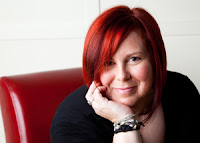All this month on Twitter, I’ve shared 101 amazing articles on plotting advice. #Plot101 has been a lot of fun! I wouldn’t want you to miss out, so here’s a list of all the articles I’ve shared.
 (This is taken right from my Tweet list, so article authors are attributed with their Twitter handles, or not at all if they didn’t have a Twitter handle, or if it’s an article by me.)
(This is taken right from my Tweet list, so article authors are attributed with their Twitter handles, or not at all if they didn’t have a Twitter handle, or if it’s an article by me.)
Are you laboring under these outlining misconceptions? @KMWeiland
Got ideas? Put them together to build a novel @JodyHedlund
Can you use coincidences in your plot? @TheresaStevens, @AliciaRasley
Nontraditional outlining @DIYMFA
Outline your novel in 30 minutes @AliciaRasley
Action & reaction to build your plot @JodyHedlund
Pulling your story out of nowhere @NatalieWhipple
Must pantsers plot?? @JamiGold
Should pantsers rely on themes? @JamiGold
Top 10 Plot problems @AliciaRasley
Character or plot? Or both? @NathanBransford
What’s wrong with your opening? What comes next? @TheresaStevens, @AliciaRasley
Plotting a novel with FreeMind diagram @spacejock
Beat Sheets for Pantsers @JamiGold
Is outlining worth it? @KMWeiland
Visual storyboarding with Trello
Prepare with a plotting notebook! @JodyHedlund
Plotting process in action @Janice_Hardy
No plot? No problem! Find one! @JodyHedlund
Plotting a novel in 3 acts @JanalynVoigt
Beat these common plotting problems! @KristenLambTX
Do you have a plot? @NathanBransford
Plot your opening right @JanalynVoigt
Plots are like onions. Or parfaits! @Janice_Hardy
Think more creatively: try these ways to brainstorm plot & scenes (I know I will!) @LiveWriteThrive
Plotting with emotions @Janice_Hardy
Plot template to keep you on target @Janice_Hardy
When the worst SHOULDN’T happen @Janice_Hardy
5 golden rules for a good plot
3 acts, 3 risks @TheresaStevens, @AliciaRasley
How to get a plot @lucreid
Plotting a character-driven novel: 3 steps @RobynDeHart
Outline your book in two sentences @NickThacker via @KMweiland
Has your plot been done before? Add a new twist @Janice_Hardy
Use characters to max out conflict @KristenLambTX
Ten tools for creative outlining
Romance beat sheets @JamiGold
Dig into your conflict @Vickihinze
How to write a novel @NathanBransford
Outline your novel backwards @KMWeiland
Diana Wynne Jones’ plotting method
What comes next? Figure it out! @Janice_Hardy
Got a theme & a problem? Get a plot! @JanalynVoigt
Having trouble starting your story? @JamiGold
Have you ever outlined longhand? Why you should try @KMWeiland
Bring your characters together to clash–and find a plot @LiveWriteThrive
Leading up to turning points @TheresaStevens, @AliciaRasley
Can pantsers plot? @Janice_Hardy
Do you have too much plot? @Janice_Hardy
Weave your character’s inner & outer journeys together! @JamiGold
Is this scene moving the story forward? Simple test @Janice_Hardy
What’s the worst that can happen? GO THERE @Janice_Hardy
Outlining as you go: the best of both pantser/plotter worlds? @JodyHedlund
Story structure for pantsers @KMWeiland via @Janice_Hardy
Don’t let plot bunnies hijack your story! @JanalynVoigt
Is this story worth writing? 1/3 @JamiGold
Is this story worth writing? 2/3 @JamiGold
Is this story worth writing? 3/3 @JamiGold
Develop your characters for better plot @TheresaStevens
SHOW your character’s traits in the plot @TheresaStevens
Plotting from character: core conflicts @TheresaStevens
Using opposing characters & conflict to move the story @TheresaStevens
The four parts of a story @storyfix
The turning points of a story @storyfix
What to do in Q1 of your story @storyfix
The all-important First Plot Point! @storyfix
Escape the sagging middle: Q2 tasks @storyfix
Shore up the sagging middle: pinch points @storyfix
Turning points: the mid-point @storyfix
Q3 of your story: THE ATTACK @storyfix
Turn for the worse: the Second Plot Point @storyfix
Q4 of your story: resolution @storyfix
Most basic story structure: 3 acts
3 and 5 act structure in action
Pros & cons of 3 act structure for plotting
Customizing the snowflake method @Carol Garvin
Pros & cons of snowflake method
Hero’s Journey plotting method
Character archetypes in the Hero’s Journey
Combining the hero’s journey with romance @FayeHughes
Drawbacks of plotting with the Hero’s Journey
Story Structure plotting example
Hero’s Journey + Story Structure for plotting
Setting up your story question
Plotting with Save the Cat! @alicross1
Plotting with a beat board @alicross1
Story questions @AnnetteLyon
What are your favorite plotting resources? Are you ready for NaNo?












